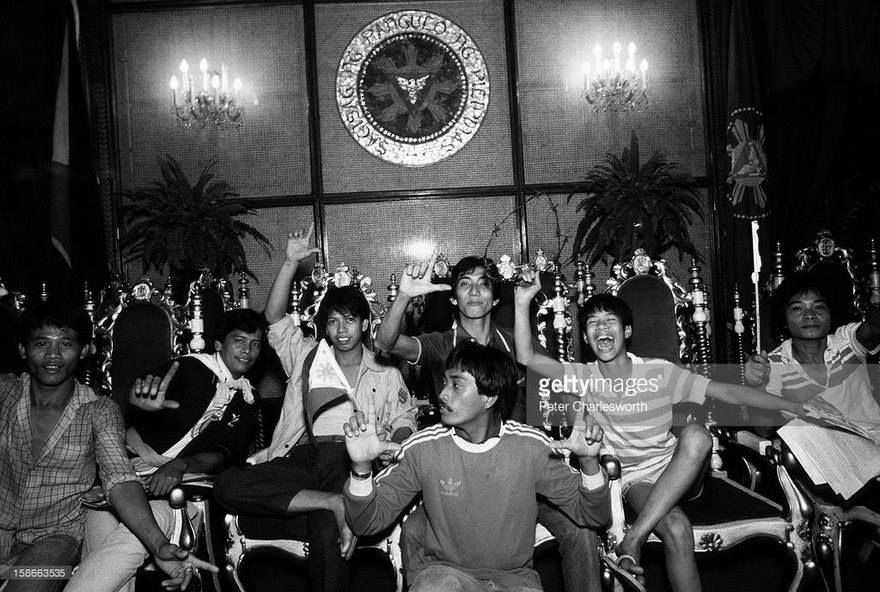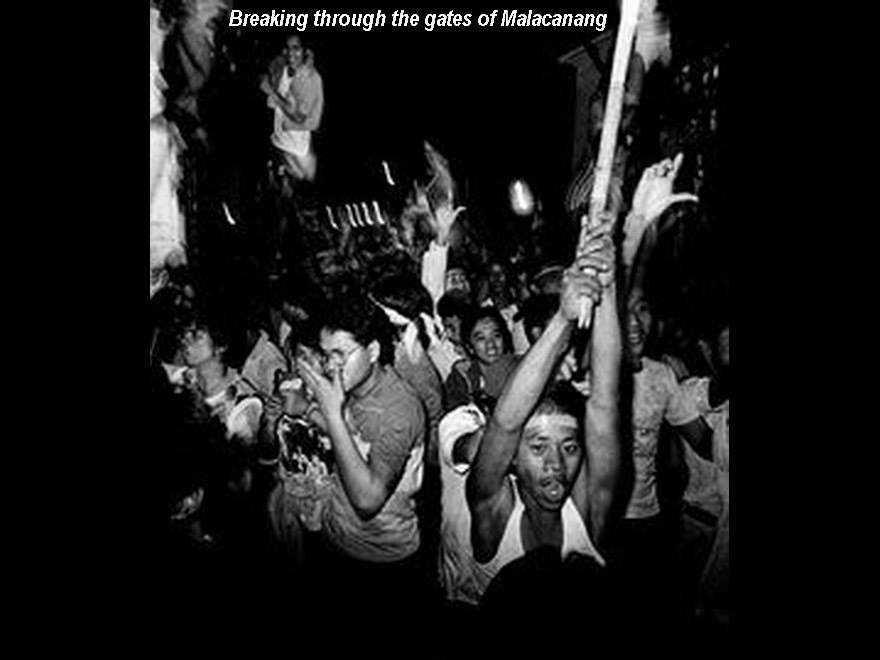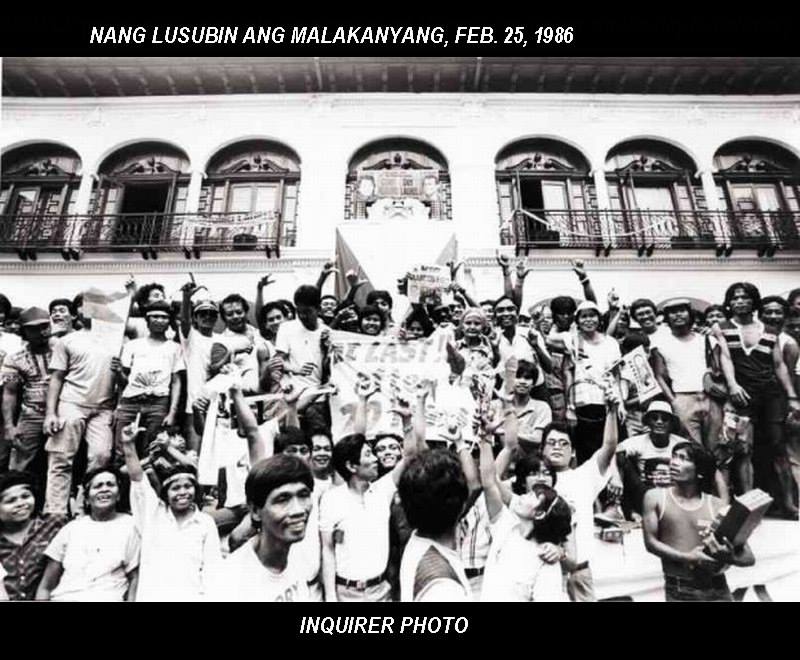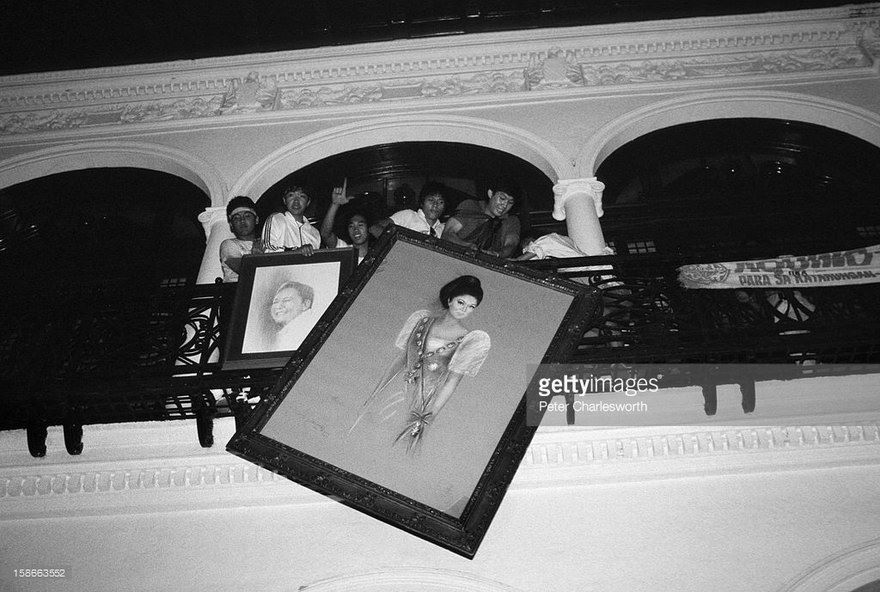
Prof. Jose Maria Sison on the 1986 uprising – 1
————- –
Evaluation of the Popular Uprising
Q4: Marcos’ ouster has been variably described as the feat of “people power,” a “peaceful revolution,” a “miracle of prayer or the rosary,” and a “pre-emptive revolution.” How do you evaluate the decisive four days–February 22 to 25, 1986–when the dictator Marcos was forced to leave the country?
A: Let me first comment on those pretty slogans used in the establishment media to hype Aquino’s rise to power and snipe at the revolutionary movement of the people.
Indeed the people’s uprising was decisive in bringing down the Marcos dictatorship. And the reactionaries prefer to call it “people power” as if it were something they can use and manipulate like horsepower. The revolutionaries would rather speak of people’s power–power belonging to the people.
The reactionaries speak of “peaceful revolution.” In fact, there were two armed camps–the Marcos-Ver camp and the Enrile-Ramos camp. These two camps came into a stalemate as various forces–the United States and the reactionaries as well as the organized progressive forces and the spontaneous masses–moved into the gap between the two armed camps.
While the military stalemate was on, more officers and men of the AFP swung to the Enrile-Ramos camp. At the same time, in view of the people’s uprising, the former military minions of Marcos could not by themselves decide who should replace Marcos. They had to accede to Aquino because she was the one with a legal claim to the presidency and had broad popular support at the time.
Cardinal Sin, the Catholic Bishops’ Conference of the Philippines and the church-run Radio Veritas played a prominent role by calling on the people to protect the Enrile-Ramos camp. But it smacks of obscurantism to talk of a “miracle of prayers or the rosary” only to negate other political forces, especially the progressive forces, whose absence would have made the overthrow of Marcos impossible. The notion of a pre-emptive revolution to avert the armed revolution is absurd. There was no revolution as there was no fundamental change of the political an d social system to the satisfaction of the people.
The armed revolution has continued against armed counterrevolution. And violence has even escalated among the reactionary factions of Aquino, Enrile, and Marcos which have their respective well-armed followings.
The military mutiny of the Enrile-Ramos camp and the RAM; and the people’s uprising, including the mass organizations of the national democratic movement and the spontaneous masses responding to the radio broadcasts, were the most conspicuous features of the process of oustin Marcos. Behind the scenes the United States exerted effective pressures on the Marcos-Ver camp to prevent it from making a more determined military offensive against the Enrile-Ramos camp. In the end, Washington intervened to fly Marcos and his retinue out of the presidential palace to Clark Air Force Base and onward out of the country to Hawaii.
There was a convergence of contradictory forces– progressive and antiprogressive–against Marcos. Although the people’s uprising played a decisive role, I must stress that the balance of strength between the revolutionary forces and the counterrevolutionary forces was such that the United States and the reactionary classes would still determine the character of the Aquino government at the top.
—————
EXCERPTS FROM CHAPTER 6 ON THE FALL OF MARCOS IN THE BOOK,THE PHILIPPINE REVOLUTION: THE LEADER’S VIEW, BY JOSE MARIA SISON WITH DR. RAINER WERNING AS INTERVIEWER. He asked the questions and I answered them in 1987 to 1988. The book was published by the US publisher, Taylor & Francis Group, in 1989.



